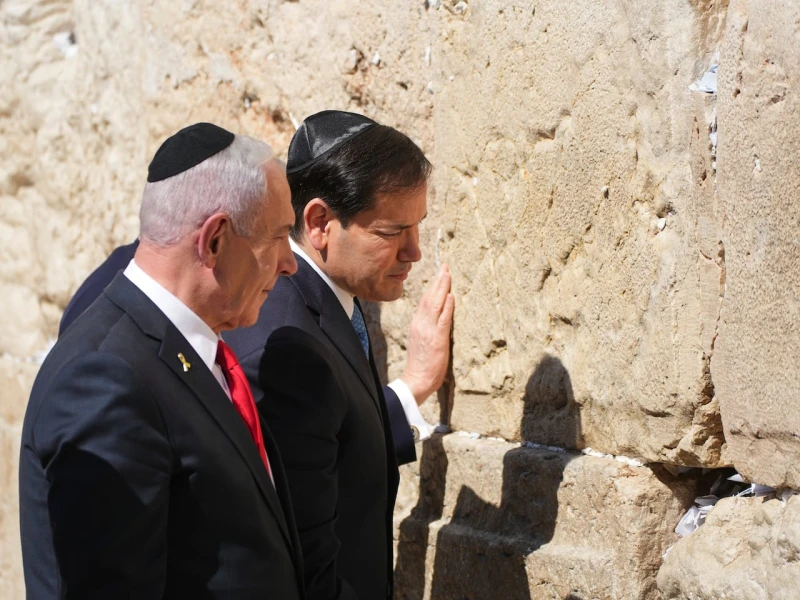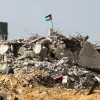Israeli forces demolished at least 30 residential blocks in Gaza City on Sunday, forcing thousands to flee, Palestinian officials said, as U.S. Secretary of State Marco Rubio arrived to discuss the future of the conflict.
Israel has announced plans to capture Gaza City — where nearly one million displaced Palestinians have been sheltering — as part of its stated goal of destroying Hamas. The military has stepped up bombardments, calling the city the group’s last stronghold.
Hamas’ political bureau, which has engaged intermittently in ceasefire and hostage-release talks, was hit in an Israeli airstrike last Tuesday in Doha, drawing wide international condemnation. In response, Qatar said it will host an emergency Arab-Islamic summit on Monday to chart the next steps.
Rubio, speaking before his meetings with Israeli officials, said Washington’s immediate priority is securing the release of the 48 hostages believed to remain in Gaza, only 20 of whom are thought to be alive, and beginning reconstruction efforts.
“What’s happened has happened,” he said. “We’re gonna meet with them (the Israeli leadership). We’re gonna talk about what the future holds.” He is scheduled to remain in Israel until Tuesday.
Upon arrival, Rubio visited the Western Wall in Jerusalem, calling it an affirmation of America’s recognition of the city as Israel’s “eternal capital,” according to the State Department. That recognition was formalized in 2017 by then-President Donald Trump, who also moved the U.S. embassy from Tel Aviv to Jerusalem.
Netanyahu, meanwhile, advanced a new settlement plan last week that cuts through West Bank land Palestinians claim for a future state. The United Arab Emirates warned the expansion could jeopardize the Abraham Accords, which normalized relations between the UAE and Israel under U.S. sponsorship.
Humanitarian agencies cautioned that an Israeli capture of Gaza City would be disastrous for a population already struggling with hunger. Gaza’s health ministry reported that two more people, including a child, died of starvation in the past 24 hours, raising the toll from malnutrition to at least 422, among them 145 children.
Israel had halted food deliveries to the enclave for 11 weeks earlier this year but has allowed more aid since late July. The United Nations, however, says supplies remain far short of what is required.
Israel has urged civilians to leave Gaza City ahead of further ground operations. Tens of thousands have fled, though hundreds of thousands remain. Hamas has called on residents to stay. Many say they cannot afford to leave, or believe there is no safety in the south, where Israel has designated a humanitarian zone. Some are hoping Monday’s Arab summit in Qatar will generate pressure to halt Israel’s advance.
“The bombardment intensified everywhere and we took down the tents, more than twenty families, we do not know where to go,” said Musbah al-Kafarna, one of the displaced in Gaza City.
Israeli forces have been fighting for weeks in at least four eastern suburbs, reducing three of them to rubble. Troops are now closing in on central and western districts where most displaced civilians are concentrated.
The Israeli military said its air campaign over the past week struck more than 500 locations, including Hamas sniper nests and observation posts, tunnels, and weapons caches. Hamas countered that since August 11, Israel has destroyed at least 1,600 residential buildings and 13,000 tents.
According to Gaza health authorities, Israel’s campaign — now approaching two years — has killed more than 64,000 Palestinians. The war was launched in retaliation for Hamas’ October 7, 2023 attack on Israel, which left 1,200 people dead and 251 others taken hostage, Israeli figures show.


 Prev Post :
Prev Post :
